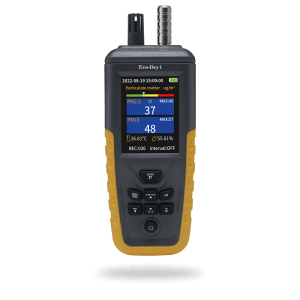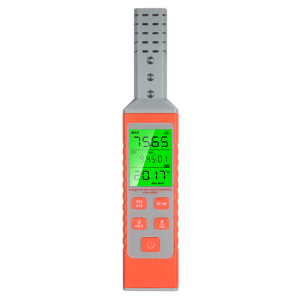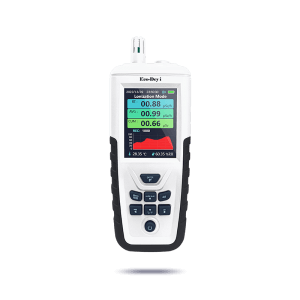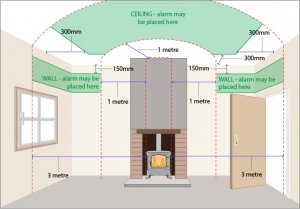Just take a deep breath – that’s not even possible in many parts of the world, because pollutants in the air pollute the respiratory tract and endanger our health. But what does that mean specifically for COPD patients?
Whether it is reference and limit values for fine dust in urban areas, the ozone hole or the ban on smoking indoors, there is a heated discussion about pollution in our ambient air for years and is influencing the political world.
Since the beginning of the industrial age, the level of pollution in the atmosphere has increased dramatically . Depending on the region, the air we breathe is more or less polluted, which can have a massive impact on the people living there. Lung patients in particular should ask themselves the question: How can I reduce the load on my lungs? But first you have to know: what are the connections between pollutants in the air and (lung) health ?
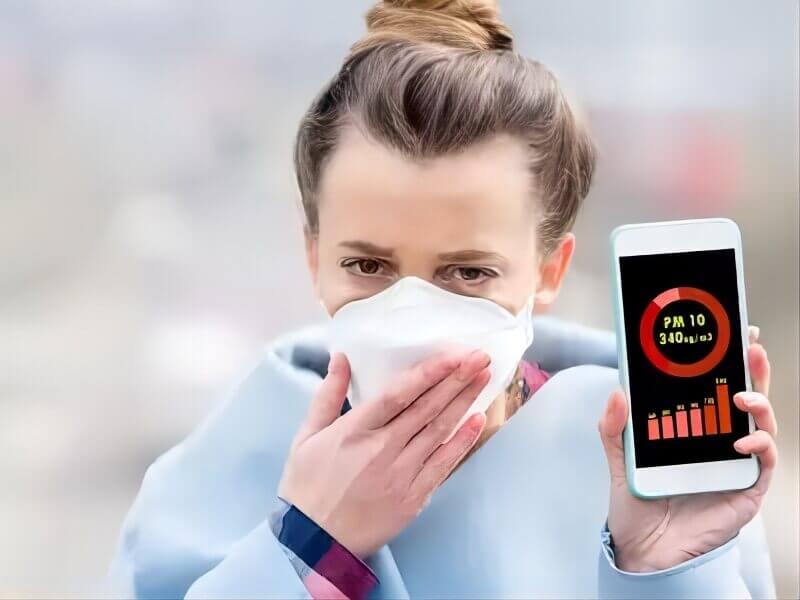
Which pollutants pollute the air we breathe?
According to experts, there are three gases in particular that pose a threat to health: particulate matter, ozone and nitrogen dioxide. If these gases are inhaled, they initially burden the lungs. But in the long term, they can affect the whole body:
Particulate matter consists of particles that are smaller than 10 micrometers – that corresponds to 0.01 millimeters. Fine dust cannot therefore be seen with the naked eye. Ultrafine dust, on the other hand, has a diameter of just 0.01 microns, which means it can travel straight through the lungs into the blood and from there into the central nervous system. The dust is mainly released through the use of motor vehicles, heating plants, ovens and heaters as well as industrial plants .
Conventional agriculture also contributes to this, because a particularly large amount of ammonia is emitted, which binds fine dust. The particles are transported into the body through breathing – particularly small ones even get directly into the bloodstream. There you can generate oxidative stress and inflammatory reactions throughout the organism. Particulate matter can cause lung and cardiovascular diseases and can even be fatal. In addition, connections between high particulate matter pollution and the development of diabetes and dementia are observed.
Ozone, on the other hand, is formed near the ground and during intense solar radiation, which affects nitrogen oxides and other pollutants. Ozone also generates oxidative stress and inflammatory reactions, especially in the lungs. It has been shown to cause more respiratory emergencies and hospitalizations. Asthma patients who suffer from high ozone exposure also experience more attacks and have more pronounced symptoms .
Nitrogen oxides are mainly found where something is burned: engines, systems for generating energy from oil, coal, wood or waste. High emission values are measured primarily in urban areas and at industrial sites. In addition to their negative influence on respiratory diseases, studies show that nitric oxide promotes cardiovascular diseases and diabetes .
Although ozone, nitrogen oxides and particulate matter are among the three best-known and best-researched pollutants, there are of course a number of other components that can damage the respiratory tract. These include, for example, the well-known asbestos , but also lesser-known substances such as fibers from cotton, flax or hemp can have a damaging effect on the lungs . Even in agricultural work, there can be a high level of pollution of the respiratory tract from pollutants. Using a multi gas analyzers could be a good idea to monitor your surrounding air quality.
How do pollutants make you sick?
Overall, there are a number of diseases that have been observed as a result of intensive exposure to pollution – including lung cancer, diabetes, high blood pressure, stroke, cerebral atrophy or heart failure. In addition, particulate matter can affect the unborn child in the womb and delay its development. Air pollution can also slow down mental performance in adults.
Some of the most important health effects of lung pollutants include:
- Irritation of the lungs and respiratory tract
- Increased susceptibility to infection
- Decreased respiratory function and thus limited performance
- Increased risk of lung diseases
- Lowering of the oxygen content in the blood
Related post: how the dust particles could affect my lungs?
How can I protect my lungs from harmful substances?
Quitting smoking is an effective way of protecting the airways from excessive exposure to harmful substances . Because of inhaling tobacco smoke, the lungs are directly exposed to a large amount of pollutants that have serious effects on general health.
There is an almost endless list of substances in the air that can damage our lungs. Not all of them can be avoided, but some can actually be eliminated. If you listen to your body and feel what is good for you, you are already a big step closer to breathing easier.

